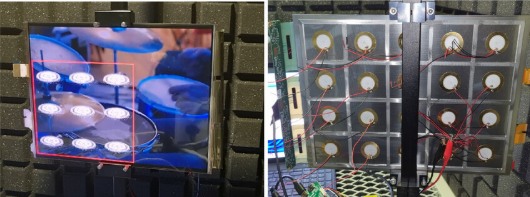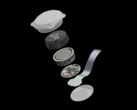Researchers at Pohang University of Science and Technology (POSTECH) have unveiled the first “pixel-based local sound” OLED panel, integrating audio playback directly into the display surface. A 13-inch prototype—comparable to tablet and laptop screens—demonstrates how every pixel can act as an individual speaker, creating a multichannel array without external drivers.
Led by Professor Su Seok Choi and Ph.D. candidate Inpyo Hong, the team placed ultra-thin piezoelectric exciters beneath the OLED layers. These exciters convert electrical signals into localized vibrations, allowing discrete sounds to emerge from specific screen regions while keeping the panel slim. Because each emitter is isolated, audio from one area does not bleed into its neighbors, eliminating the crosstalk that plagues many panel-speaker concepts.
The researchers added frame structures tuned for shape, size, and material impedance to control those vibrations. The frames confine acoustic energy to defined zones, smooth the frequency response, and cut total harmonic distortion across a broader bandwidth. Long-term tests showed stable sound-pressure levels even as input voltage and listening distance varied, signaling readiness for commercial scaling.
Unlike earlier display-speaker hybrids, the POSTECH design maintains the thin profile prized in OLED products while offering precise spatial audio. The successful 13-inch demonstration suggests straightforward integration into existing manufacturing lines for tablets, laptops, and automotive dashboards.
So far, the team hasn’t shared any timelines or cost estimates. We don’t yet know when, or if, this pixel-level sound tech will appear in everyday devices.
Source(s)
ScienceDaily (in English)












